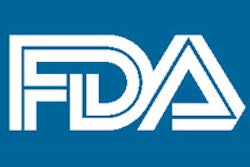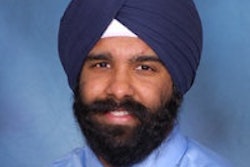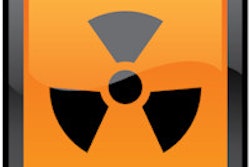An initiative by the U.S. Food and Drug Administration (FDA) to require improvements in medical devices for pediatric imaging was uniformly applauded by attendees at a daylong public workshop held July 16 on the FDA campus in Silver Spring, MD.
Called after several high-profile cases in which children were overexposed to medical radiation, the workshop served as a national podium for pediatric medical imaging specialists and industry representatives to express their support of an FDA draft guideline recommending additional pediatric-related information in premarket notifications for x-ray imaging devices.
But presenters on both sides also expressed concern about specific elements in the guidelines, and warned that a lack of clinically validated information and standards could work against the initiative.
FDA perspective
The impetus for the workshop came from the FDA's launch of a new program that will require manufacturers to consider the safety of children when designing new modalities. It published a draft guidance document on May 10, for which public comment is currently being solicited through September 7, 2012.
The FDA doesn't question the benefits of diagnostic imaging, particularly the advances in rapid diagnosis offered by CT exams. But the steadily increasing use of ionizing radiation to diagnose both children and adults in the U.S., with an estimated 8 million CT exams performed annually on children, has convinced the agency that imaging must be clinically justified, optimized for the lowest possible dose, and made as safe as possible for patients.
The workshop was moderated by U.S. Navy Capt. Sean Boyd, MPH, deputy director of the Division of Mammography Quality and Radiation Programs of the Center for Devices and Radiological Health (CDRH). After Mary Pastel, deputy director for technical and radiological initiatives, presented an overview of the FDA's regulatory activities, Boyd discussed the agency's radiation dose reduction initiatives already under way.
Boyd praised the efforts of the Image Gently and Image Wisely campaigns to raise awareness of radiation dose at a global level, the American College of Radiology's (ACR) Dose Index Registry initiative to fill a void until a national dose registry is established, and the ACR's newly launched effort to commercialize clinical decision support guidelines in its Appropriateness Criteria. He also acknowledged improvements in radiation dose check features, the result of partnership activities by the American Association of Physicists in Medicine (AAPM) and the Medical Imaging and Technology Alliance.
"DICOM Structured Reporting has made possible the standardized collection and reporting of radiation dose data and its transfer in the future to a national dose registry recording diagnostic reference levels. However, systems are needed to automate capture and transfer, and knowledge tools are needed to make sense of the data," Boyd acknowledged.
He announced that both the U.S. Department of Defense and the Department of Veterans Affairs are planning to collect dose data, and are considering establishing a federal dose registry.
Medical physicist Thalia Mills, PhD, of the diagnostic devices branch of the CDRH's mammography quality and safety program, also discussed pediatric dose reduction efforts.
"We have a responsibility in reducing radiation exposure, especially for children," Mills said. "Younger patients are more sensitive to radiation than adults, they have a higher cancer risk, and realistically they may have many more high-radiation-dose exams in their lifetimes than their parents and grandparents."
Because the majority of radiology exams of children are performed at community rather than at pediatric hospitals, Mills emphasized the FDA's concern that many of these facilities have not optimized their equipment or their protocols for use with children. She stated that everyone in the imaging chain must be proactive, starting with parents asking if the exam is necessary and child-optimized to referring physicians, who could do more to justify and educate both the benefits and risks of imaging to parents.
Imaging professionals need to optimize dose for pediatric patients on the modalities they use, develop pediatric-specific protocols, and maintain aggressive quality control programs that include dose monitoring and benchmarking against diagnostic reference levels.
Hospital administrators need to authorize the purchase of modalities with dose-optimization features, and create a climate of supporting training and adherence to safety standards, as well as a culture emphasizing quality assurance, she said.
And vendors need to design equipment that is as safe as possible for children.
"The problem today is that some x-ray imaging equipment isn't sold with special pediatric radiology features, or the features are not defined for pediatric use," Mills said.
She noted that the regulatory process may work against this, because manufacturers may be hesitant to submit new features to the FDA. The draft guidance under consideration is designed to make this process easier for manufacturers, she said.
Pediatric imaging specialists comment
Pediatric imaging specialists were allocated the majority of time during the workshop. They represented a spectrum of radiologists, medical physicists, and radiologic technologists, and also included spokespersons for dental imaging.
Dr. Dorothy Bulas, a professor of pediatrics and radiology at the Children's National Medical Center in Washington, DC; Ralph Lieto, a medical physicist at St. Joseph Mercy Hospital in Ann Arbor, MI; and Keith Strauss, PhD, a clinical imaging physicist at the Cincinnati Children's Hospital Medical Center, each pointed out the implications of a label on a scanner that would state it was not intended for pediatric use if its manufacturer had not met premarket guidelines relating to pediatric imaging. Both suggested that this guidance recommendation be removed.
"If I work at a community hospital that purchases 'adult only' imaging equipment, do I want to be the staff member explaining to a parent why the FDA has a label saying a particular modality is not approved for children under the age of 5 when I'm about to perform an exam using it?" Strauss asked.
"Such labeling would require that machines be used off-label," Lieto added, representing the AAPM. He also suggested that the FDA draft guidelines be based on patient thickness rather than height, weight, and age. "A 12-year-old may have the same sized abdomen as a very small adult woman," he pointed out.
Bulas, representing the American Academy of Pediatrics (AAP), expressed concern that some manufacturers may choose not to submit pediatric-specific information to the FDA, but that the equipment they sell may be very adaptable to pediatric protocols and dose reduction techniques.
"The market for pediatric imaging is small. FDA submissions are costly," she noted. "We don't want to create barriers where they don't need to exist."
But Bulas applauded vendor efforts to provide specifications for pediatric protocols, increased information to support pediatric guidelines, assistance to support users when they are developing pediatric dose parameters, and easy-to-use quality assurance tools to track radiation dose.
Improved training and testing are needed, and materials need to be user-friendly, easily accessible, and understandable. Equipment available today can be cumbersome and time-consuming to figure out how to use, she said. Vendors can help by providing more information.
The failure of vendors to provide more information on their products was lambasted by Strauss, who was blunt in his criticism of a vendor that withheld information he needed for validation testing because the vendor considered it proprietary -- and still does. "Design engineers must get out of their ivory towers and into the clinical arena. Knowledge must be shared, and mutual trust must be established to allow for a free exchange of information and ideas," he said.
Strauss emphasized that if he is performing acceptance testing on a given unit, he must know how it was designed. If he expects it to do something, and it wasn't designed to do that function, he could lose all credibility, not to mention potentially putting a patient in danger.
"Vendors may develop unique technologies, but they must provide guidance on how they can be used," Strauss stressed. This includes educating all applications specialists with knowledge on how to leverage features for pediatric images.
Dr. Marta Hernanz-Schulman, a professor of radiology and pediatrics at Vanderbilt Children's Hospital in Nashville, TN, discussed issues relating to fluoroscopy equipment. Approximately 90% of all pediatric fluoroscopy procedures are performed in adult hospitals, according to a survey conducted in 2007.
She noted that most equipment has no dose regulations when it runs on normal dose, that a dose can be doubled with a push of a button, and that warnings can be overridden. Everybody relies on the operator.
Today's equipment may only allow three levels of pulse rates; more are needed, she suggested. So also is a removable antiscatter grid, which could reduce the amount of radiation dose by up to 80%.
In addition, Hernanz-Schulman emphasized the need for vendors to standardize and clearly label buttons. Right now, button names and their placements differ among manufacturers, and her research with technologists determined that this was confusing. Fluoroscopes also should be made more pediatric-friendly by enabling a user to enter patient specifications, size, weight, and study type, and by having the equipment calculate the most appropriate parameters.
The need for more training was a common theme. Dr. Steven Don, an associate professor at the Mallinckrodt Institute of Radiology in St. Louis, pointed out well-known concerns about safety issues relating to digital radiography (DR). He discussed issues relating to inappropriate use of grids, dose creep and overexposure, and electronic cropping.
"Based on technologist feedback, we've determined that about half the techs use [cropping] 75% of the time, and radiologists are completely unaware of this," he said. Don recommended that such images need to be mapped as cropped and marked for quality assurance review.
Overall quality assurance measures need to improve as well. He recommended the development and use of software tools that automatically send data about exams to a national registry for benchmarking.
Dr. Marilyn Goske, a professor of radiology at Cincinnati Children's Hospital Medical Center, concurred. She described the plethora of support and instructional material provided when she purchased a new washing machine. "The same is needed for pediatric imaging products," she emphasized.
Vendor comments
Vendor representatives expressed their support of the guidelines, which they intend to comment upon in detail. They made a strong case that more clinical standards need to be developed and more research in clinical settings needs to be performed.
Clear criteria for testing, defined by industry standards, need to be defined. Input from equipment users and medical physicists with respect to prioritizing requests is needed. Summarizing what changes had been implemented, vendors and users alike were quick to note that imaging exams have improved significantly with respect to radiation dose exposure and being safer for patients.




















